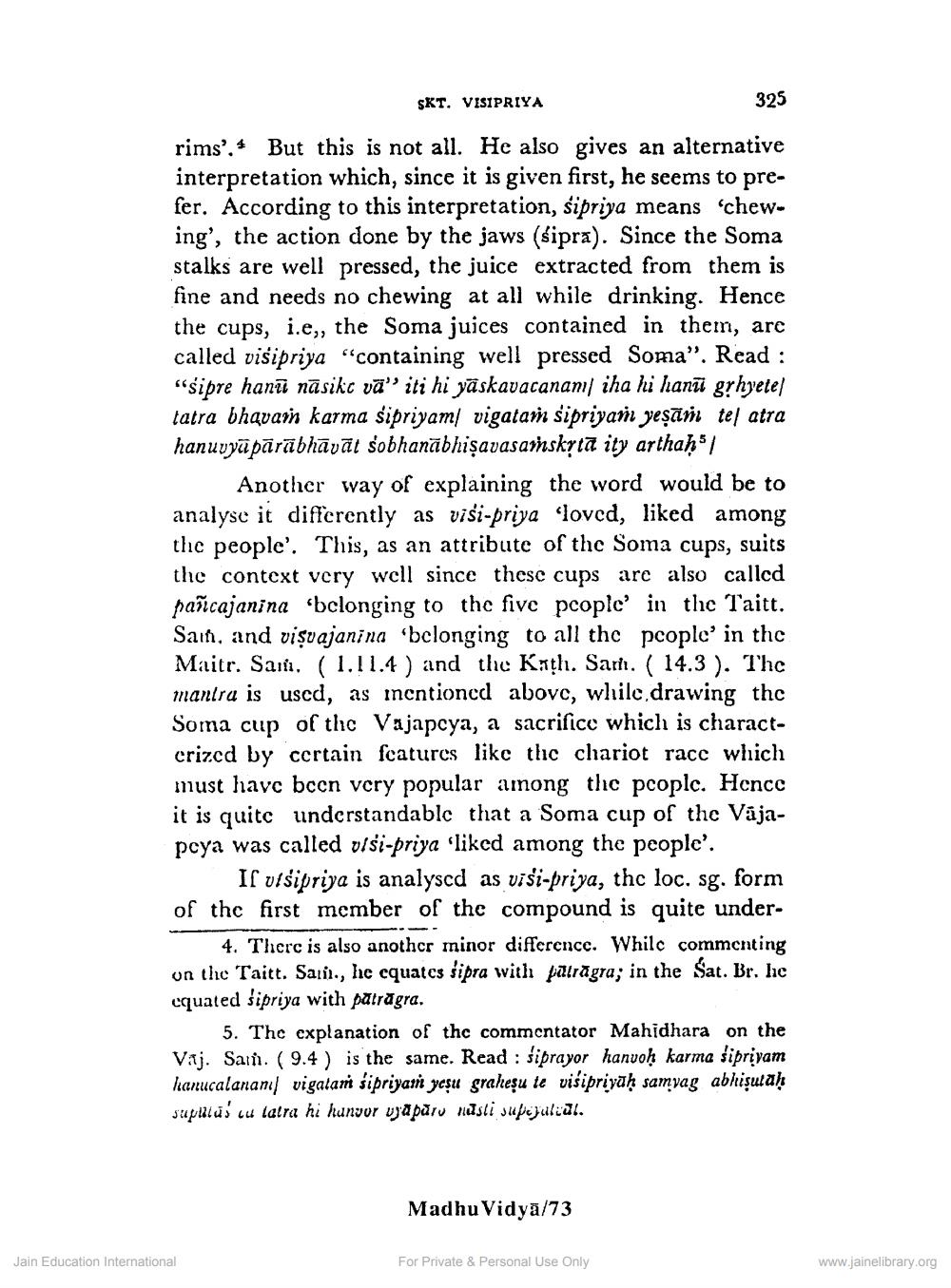________________
SKT. VISIPRIYA
325
rims'. But this is not all. He also gives an alternative interpretation which, since it is given first, he seems to prefer. According to this interpretation, sipriya means 'chewing', the action done by the jaws (sipra). Since the Soma stalks are well pressed, the juice extracted from them is fine and needs no chewing at all while drinking. Hence the cups, i.e,, the Soma juices contained in them, are called višipriya “containing well pressed Soma". Read : sisipre hanī nāsikt vā'' iti hi yāskavacanam/ iha hi hanii grhyetel tatra bhavain karma sipriyam vigatam sipriyan yeşarı tel atra hanuvyāpārābhāvāt sobhanābhişavasarnskytā ity arthaḥ5 /
Another way of explaining the word would be to analyse it differently as visi-priya 'lovcd, liked among the people'. This, as an attribute of the Soma cups, suits the context very well since these cups are also called pañcajanina 'belonging to the five pcoplc' in the Taitt. Sain, and visvajanina 'bclonging to all the people’ in the Maitr. Saia, (1.11.4 ) and the Kith. Sam. ( 14.3). The mantra is used, as incntioned above, while, drawing thc Soma cup of thc Vajapcya, a sacrifice which is charactcrized by ccrtain features like thic chariot racc which must have been very popular among the people. Hencc it is quite understandablc that a Soma cup of the Vājapcya was called viši-priya 'liked among the people'.
If visipriya is analyscd as visi-priya, thc loc. sg. form of the first member of the compound is quite under
4. Therc is also another minor difference. Whilc commenting on the Taitt. Saii., he equatcs sipra with palragra; in the Sat. Br. he cquated šipriya with patrăgra.
5. The explanation of the commentator Mahidhara on the Vaj. San. (9.4) is the same. Read : siprayor hanvoh karma sipriyam hanucalananul vigatan sipriyan yesu grahesu te višipriyaḥ samyag abhișulah supulus cu latra hi hunyor vja pūtu musti sufijulual.
Madhu Vidyā/73
Jain Education International
For Private & Personal Use Only
www.jainelibrary.org




